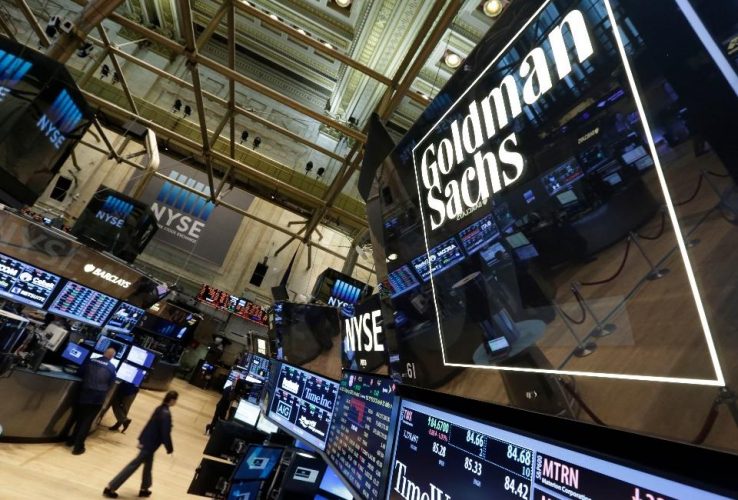Goldman Sachs’ Trump Trade

Goldman Sachs has emerged as a notable beneficiary during the Trump administration on Wall Street. The election of Donald Trump has generated significant optimism in the market regarding dealmaking, regulatory relaxation, and private credit expansion. Collectively, these factors would enhance Goldman Sachs’ luster. Goldman Sachs has emerged as the leading performer among global banks within the S&P 500 this November, registering an increase of nearly 15%. This figure significantly surpasses the performance of S&P 500 banks, which have risen approximately 9%, and aligns closely with the monthly increase recorded by private investment firm Apollo Global Management.
Such an occurrence might not be mere happenstance. Goldman Sachs, akin to its Wall Street counterparts, stands to gain from an increase in merger-and-acquisition or initial-public-offering activity, alongside any potential regulatory rollbacks. Typically, when conditions are favorable on Wall Street, they tend to be exceptionally advantageous at Goldman Sachs. In the heightened activity of 2021, the return on equity for the year stood at 23%, in contrast to the 12% recorded by S&P 500 banks as a whole.
Goldman may emerge as a significant beneficiary among banks from substantial growth in private credit and alternative assets, mirroring the optimism that has driven Apollo’s shares in recent quarters. Goldman’s recent strategy has prominently featured a transition in its asset-management division, moving away from proprietary trading to a focus on client investments via funds. The former requires more capital investment and results in a consistent flow of management fees.
A primary objective is to expand Goldman’s alternative asset-management division, encompassing assets that extend beyond traditional public stocks, bonds, and cash. As of the third quarter, Goldman was overseeing approximately $140 billion in private-credit assets. The expansion into rapidly growing sectors of the market persists, particularly in asset-backed securities, which cater to insurers with investment-grade characteristics. Goldman has been broadening its operations by offering financing solutions to nonbank lenders.
What factors might lead to private credit gaining advantages under a Trump administration? A potential explanation could be political in nature. Emerging regulatory bodies overseeing securities or systemic risk may exhibit a reluctance to restrict access to relatively illiquid private-credit investments for ordinary investors, or to regard them with skepticism as potential sources of financial instability. “We do not anticipate any limitations on private credit under Trump’s administration,” noted Jaret Seiberg, an analyst with TD Cowen’s Washington Research Group, further stating: “This is why we expect private credit to persist in its growth over the next four years.”
Another consideration is that increasing Treasury yields may serve as an advantage for private credit, particularly in significant growth sectors like asset-backed finance. “The rates applied to those longer-term assets will mirror the upward trend in Treasury yields,” states Mark Wasden, senior vice president of private credit at Moody’s Ratings—although elevated long-term rates may also increase funding expenses.
Indeed, several prominent Wall Street banks are actively engaged in the private-credit sector, both as fund managers and through their various dealmaking and financing divisions. Goldman’s ongoing strategic realignment suggests it may experience greater relative advantages. Goldman has the potential to enhance its pretax margin within its asset and wealth-management division by increasing fee generation. The bankers who have been compensated for their involvement in the firm’s own transactions can also focus on allocating funds for client investments that yield fees. Goldman is actively pursuing the release of capital through the reduction of on-balance-sheet positions, necessitating substantial backing from the firm’s equity. Should Goldman expedite the distribution of additional capital to shareholders, it stands to enhance its fundamental return on allocated equity within that sector.
The unit also harbors a significant opportunity for revenue through unrecognized incentive fees associated with transactions completed for clients. These are generally fees anticipated by the bank upon the sale of an investment, though certainty regarding their realization remains elusive. Revenue recognition could occur more swiftly as additional deals are finalized. Goldman disclosed approximately $4 billion in unrecognized performance fees, in stark contrast to the mere $85 million recorded in revenue for that category during the third quarter. Goldman aims to achieve $1 billion in annual revenue from these fees.
Undoubtedly, various factors could emerge to temper the market’s clear optimism regarding Wall Street. Should tariffs impose burdens on large multinational corporations, the result may be an expansion of credit spreads or a deceleration in client engagement. Excessive market volatility stemming from policy ambiguity or unforeseen presidential statements, coupled with rapidly increasing interest rates, may complicate the financing of transactions. The regulatory pendulum often fails to oscillate as widely as many anticipate. While certainty remains elusive, should market optimism materialize, Goldman Sachs could emerge as a strategic avenue for investors.

